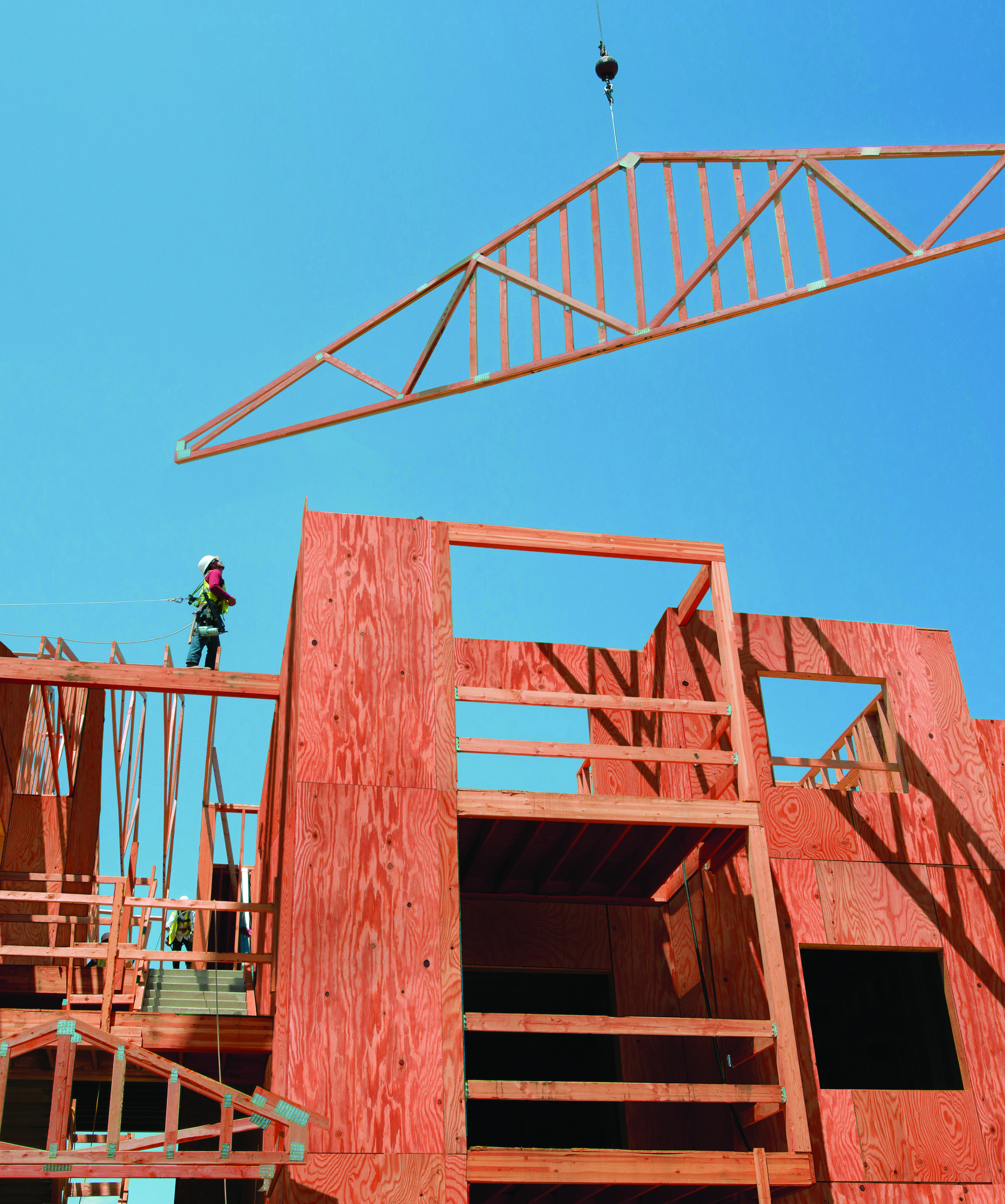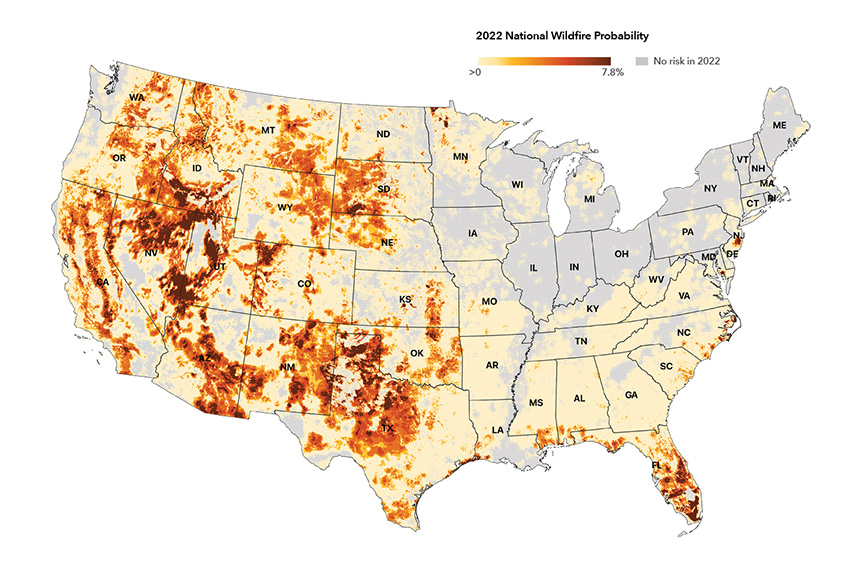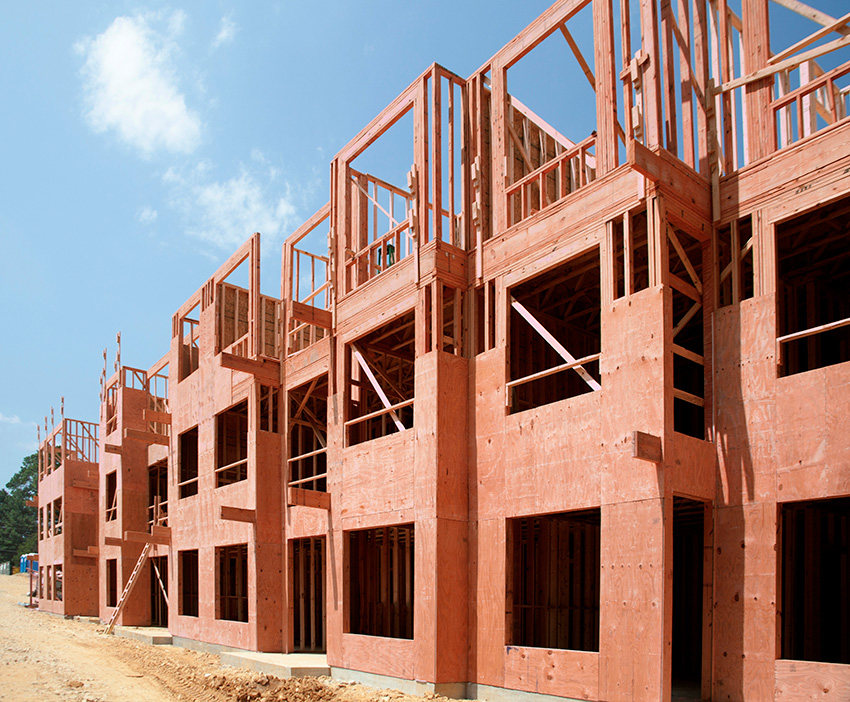Fire Retardant-Treated Wood
Learning Objectives:
- Recognize the safety threats to people and property as a result of building fires and the increasing threat of wildfires in many locations.
- Identify the relevant codes and standards, including testing requirements, related to fundamental fire safety in buildings.
- Assess the ability of fire-retardant-treated wood (FRTW) to meet the code requirements for fire safety as well as economic and environmental concerns.
- Design and specify FRTW appropriately into different parts of residential and commercial buildings including approved construction assemblies.
Credits:
This course is approved as a Structured Course
This course can be self-reported to the AANB, as per their CE Guidelines
Approved for structured learning
Approved for Core Learning
This course can be self-reported to the NLAA
Course may qualify for Learning Hours with NWTAA
Course eligible for OAA Learning Hours
This course is approved as a core course
This course can be self-reported for Learning Units to the Architectural Institute of British Columbia

Photo courtesy of ProWood
Fire-Retardant Pressure-Treated Wood (FRTW) is recognized as a code-acceptable option for framing walls and roofs for many different types of buildings.
Fire safety is a concern in all buildings but so is ease of construction and budgetary requirements. Finding a way to balance these aspects can often be the difference between a successful building project and one that is less so. As a result, many architects and building owners consider different types of materials and construction techniques in order to balance all of the project requirements. For many low- to mid-rise commercial buildings, that includes taking a closer look at wood products for economy, sustainability, and design flexibility. In order to be code-compliant, fire-retardant-treated wood (FRTW) is often used with many tested and proven wall, floor, and roof assemblies that are readily constructible. In this course, we take a closer look at why fire resistance is so important in buildings and how FRTW is being used in several different ways to meet that need in well-designed buildings.
THE NEED FOR FIRE RESISTANCE
Protecting buildings from fire has been a common concern throughout history. While the things that may cause fires have changed over time, the impact of them on people and property is real and often dramatic. The nature of building fires can fall into two categories.
Property Fires
Property fires, the first category, continue to happen across all building types in the United States. The National Fire Protection Association (NFPA) tracks the number of fire calls and events in the U.S. on an annual basis. According to a report in October of 2023 on their website, the following relevant key findings of their work were identified:
- “In 2022, local fire departments responded to an estimated 1.5 million fires in the United States. These fires caused 3,790 civilian fire deaths and 13,250 reported civilian fire injuries. The property damage caused by these fires was estimated at $18 billion.
- More than one-third of the fires (522,500–or 35 percent) occurred in or on structures. Most of the fire losses were caused by these building structure fires, including $15 billion for direct property damage (83 percent).
- Vehicle fires accounted for only 13 percent of fires, 16 percent of civilian deaths, and 5 percent of civilian injuries.
- Data suggests that less progress has been made in preventing deaths and injuries associated with reported fires. For overall home fires, the 2022 rate of 7.5 deaths per 1,000 reported home fires was higher than the rate of 7.1 in 1980. The death rate for one- or two-family home fires was 14 percent higher than in 1980, while the rate for apartment fires was 18 percent lower.”
They also point out that “most of the reduction in reported fires and fire losses occurred more than a decade ago. Thus, there is more work to be done to reduce fire incidence and improve life safety.” Architects and others involved in public safety play a key role in this regard.
Wildfires
This is the second category of fires. It’s no secret that wildfires are increasing in the U.S. and many communities across the country have experienced their effects on buildings, people, and the environment. The NFPA report cited above noted their significance, stating “Neither structures nor vehicles were involved in half of the fires reported in 2022 (51 percent). These fires included brush, grass, or wildland fires (22 percent); outside rubbish fires (16 percent); outside fires involving property of value (crops, timber, and other properties of value–6 percent); and other fires (6 percent).” Clearly, this is a significant concern and a disturbing trend.
In response, some jurisdictions are implementing Wildland-Urban Interface (WUI) building codes to address fire safety concerns. These WUI codes typically require greater fire resistance in the construction of all types of buildings in order to provide a larger time frame for people to escape wildfires. In these cases, the choice of materials used to achieve adequate or required fire resistance in building exteriors and structures becomes a significant point of design and specifications.

Image courtesy of ProWood – Source: First Street Foundation
Wildfires have become more probable in many locations across the United States and are as significant a concern to safety in buildings as fires that start within buildings.
BUILDING CODES AND FIRE
A major motivation for building codes has always been fire protection. For the past 20 years or so, the standardized model codes have been developed and regularly updated by The International Code Council (ICC). This is a very comprehensive, ongoing process that involves thousands of code officials, design professionals, construction specialists, and others around the country. Once vetted, voted on, and published, it is then up to the local authorities having jurisdiction (AHJs) to adopt the version of the codes they choose to enforce. While the ICC publishes and coordinates a “family” of more than a dozen different codes, several are relevant to our discussion here.
- The International Building Code (IBC) is the basis of all commercial building design and construction and is the foundational document of most of the other building related codes.
- The International Residential Code (IRC) applies specifically to one-and-two-family detached and attached homes. Multifamily residential properties are covered by the IBC.
- The International Existing Buildings Code (IEBC) applies to alterations, additions, or change of occupancy of existing buildings pointing out the things that either apply or may be exempt from the IBC based on project size or scope.
- Related codes such as the International Fire Code (IFC) and the International Energy Conservation Construction Code (IECC) apply to all building projects with more detailed requirements for fire- or energy-related issues, all coordinated with the IBC and the IRC.

Photo courtesy of ProWood
The International Building Code (IBC) identifies the required fire resistance for exterior walls, interior walls, floors, and roofs along with the acceptable uses of fire-retardant-treated wood all based on the five defined Types of Construction.

















